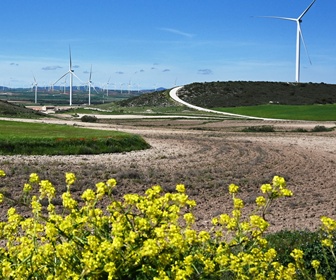Competition forces turbine OEMs to intensify the pace of innovation to lower LCOE. Next generation technologies for onshore 4-5MW models with 160-175+m rotors and offshore 12-15+MW models with 200-250+m rotors are expected according to MAKE’s Next Generation Wind Turbine Models research note.
To improve competitiveness in auctions across global markets, turbine OEMs (Original Equipment Manufacturers) have accelerated the pace of new product introductions, often with larger rated turbines and longer rotors.
OEMs’ platform strategies determine new product development and how best to extend the commercial life cycle of their current portfolios. OEMs will exploit design margins, optimize investments in the supply chain and deliver lower LCOE (Levelized Cost of Electricity) for asset owners.
The competitive landscape, namely the transition in many markets globally to auction systems, results in shorter commercial life cycles of turbine platforms. OEM business plans and CAPEX investment must incorporate shorter platform/product lifecycle assumptions, with higher volumes offered in auctions offsetting those investments.
Turbine platform choices are dominated by regional demand profiles and wind resource conditions. China and India are dominated by 2.0-2.5MW turbine models with specific power ratings of 180-220 w/m2 due to ultra-low wind speed regimes.
First generation 4.XMW platforms inch towards 5.XMW platforms with power uprates in generators, an increase in gearbox torque ranges and control system optimisations. The 5.XMW turbines will feature rotor sizes of 160-175+m and towers taller than 180 metres.
Developers in major markets such as the US, historically dominated by high capacity factor turbines, are increasing their deployment of larger rated turbines. The trend will ramp up in the US post-2020, when 4.XMW turbines see siting in multiple states. Developers and OEMs are leveraging the longer PTC (Production Tax Credits) cycle to get FAA (Federal Aviation Administration) approvals for tip heights greater than 500 feet (152.4m), where taller towers and longer rotors on 4.XMW platforms show favourable LCOE.
Logistics and transportation are one of the crucial challenges deterring the adoption of larger rotors. Industry will consider two parallel developments tracks for blades on next-generation platforms, one with conventional cost-effective single piece technology and the other with split blades for logistic constrained sites.
Offshore projects do not face the same logistics barriers as onshore projects, as the supply chain is built closer to ports. Developers over the past year have submitted “zero subsidy” bids for offshore projects. Turbines procured by winning developers will have an unprecedented range of 12-15+MW with massive rotors ranging 200-250 metres.










